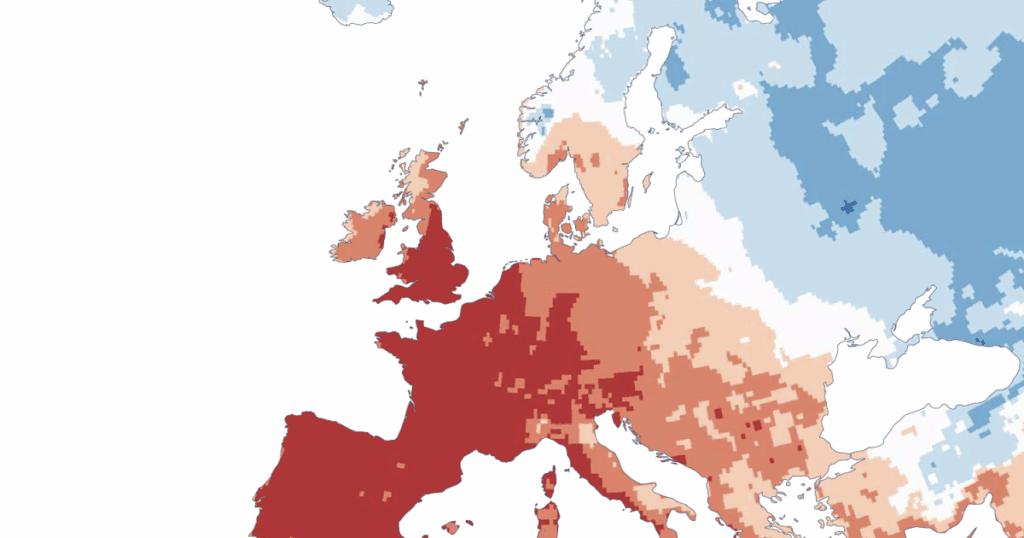The recent heat wave in Europe arrived unexpectedly and has already experienced two significant spikes in temperatures, severely affecting millions. From late June to mid-July, temperatures hit up to 46 degrees Celsius (114°F), with record-breaking heat observed in many parts of Western Europe. Greece faced wildfires and evacuations, while France implemented emergency measures like closing schools and the Eiffel Tower. Italy’s outdoor work ban impacted workers, and Spain reported 1,180 heat-related deaths recently, marking a sharp increase from the previous year.
The first heat wave peaked between June 17 and 22, followed by a second spike from June 30 to July 2, where temperatures exceeded 40°C (104°F) in several regions. This extreme heat is attributed to a “Heat Dome” weather phenomenon, which traps hot air, leading to prolonged high temperatures and reduced rain.
June 2023 was the warmest on record for Western Europe, with average temperatures reaching 20.49°C (68.88°F). This trend reflects a broader pattern, with Europe warming by 0.53°C (0.95°F) per decade since the mid-1990s, exacerbated by reduced air pollution that allows more solar radiation to reach the surface.
A study by Imperial College London estimated around 2,300 heat-related deaths in 12 European cities during the peak of the heat, with many victims being elderly individuals over 65. This early heat arrival poses additional risks, as such high temperatures typically occur later in summer.
Globally, June was the third warmest since 1850, indicating an alarming trend in rising temperatures. Human-induced climate change is advancing, with an increasing rate of 0.27°C per decade from 2015 to 2024, underscoring the urgent need for action against global warming.
Source link


